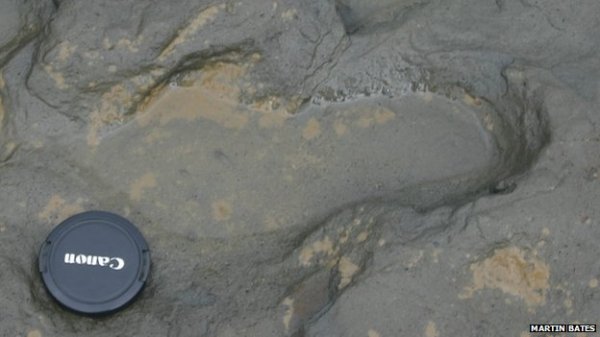Human Footprints Dating Back 800,000 Years Discovered In Norfolk UK
Archaeologists have discovered intriguing human footprints on the beach at Happisburgh in Norfolk, East of England. The prints, thought to be more than 800,000 years old, were found in silt on the beach at Happisburgh on the northeast coast of the county.
Scientists believe the prints, which five different people probably made, are direct evidence of the earliest known humans in northern Europe. Dr. Nick Ashton from the British Museum said it was “an extraordinarily rare discovery.”

The prints were found at low tide when heavy waves washed away much of the beach sand to briefly expose the silt, and scientists rushed to photograph them before the sea eroded them.
“At first we weren’t sure what we were seeing but as we removed any remaining beach sand and sponged off the seawater, it was clear that the hollows resembled prints, perhaps Human Footprints, and that we needed to record the surface as quickly as possible before the sea eroded it away,” Ashton said.
The scientists also made 3D models of the surface, which show distinct heel, arch, and toe marks left by a group of adults and children – with some equating to modern shoe sizes of up to UK size eight. Archaeologist Simon Parfitt said the mix of sizes indicates a family group, rather than a hunting group, who appear to be on some sort of trail and probably heading south.
Researchers could also use the foot measurements to estimate the height of the people involved, ranging from around 3ft to 5ft 7ins. When the footprints were made, the area around Happisburgh was several miles from the coast, and Britain was still linked by land to continental Europe. It would have been home to animals, including deer and bison, and provided plants, seaweed, and shellfish for food.
“The latest 3D models show these prints in incredible detail, and by measuring the footprints, by looking at the length and width, we can reconstruct the height and body weight of the individuals, and from that, we can show a male and also some smaller individuals, which probably included females and some youngsters. They are a family group rather than a hunting party,” Dr Ashton said:

“We can’t be certain about the human species that left these marks, but we know from the age of the site that in southern Europe there is a species called homo ancestor and these footprints may be the tracks left by that early human species.”
The site at Happisburgh has been investigated for the last ten years and previous finds include evidence of an extinct type of mammoth, horse, and early forms of vole.
“The humans who made the Happisburgh footprints may well have been related to the people of similar antiquity from Atapuerca in Spain, assigned to the species Homo antecessor (“Pioneer Man”). These people were of a similar height to ourselves and were fully bipedal,” Professor Chris Stringer of the Natural History Museum said.
“They seem to have become extinct in Europe by 600,000 years ago and were perhaps replaced by the species Homo heidelbergensis. Neanderthals followed from about 400,000 years ago, and eventually modern humans some 40,000 years ago.”




